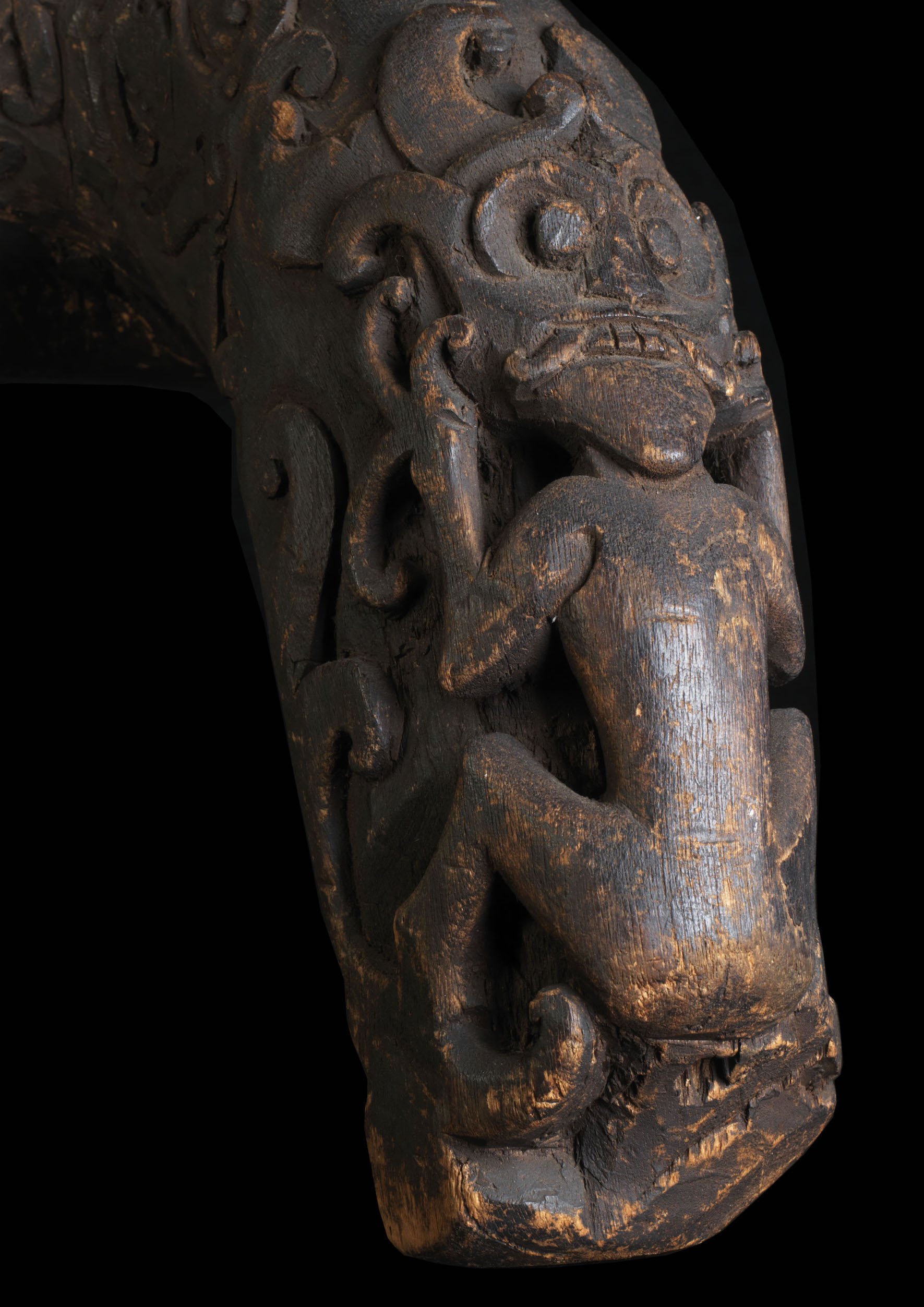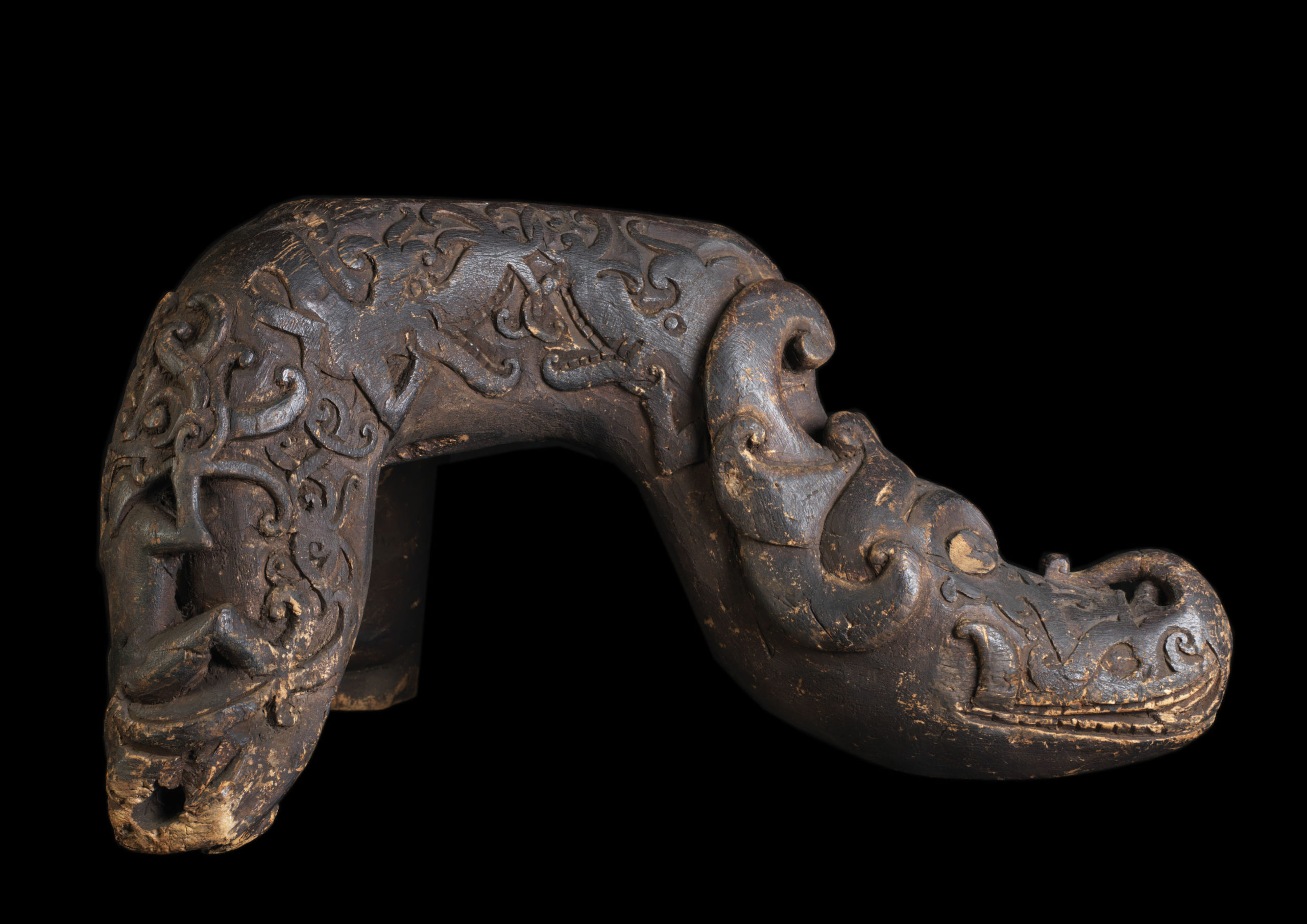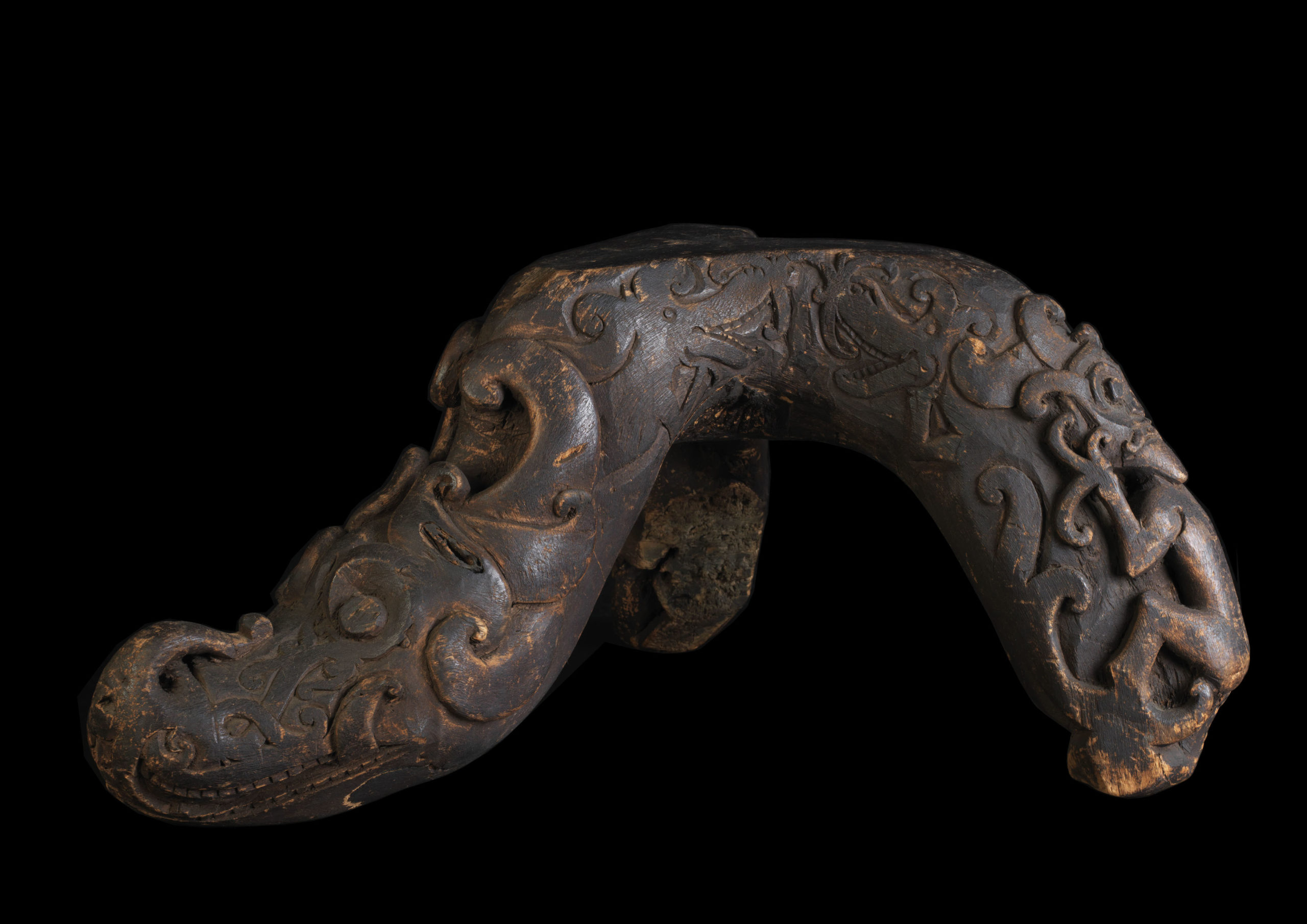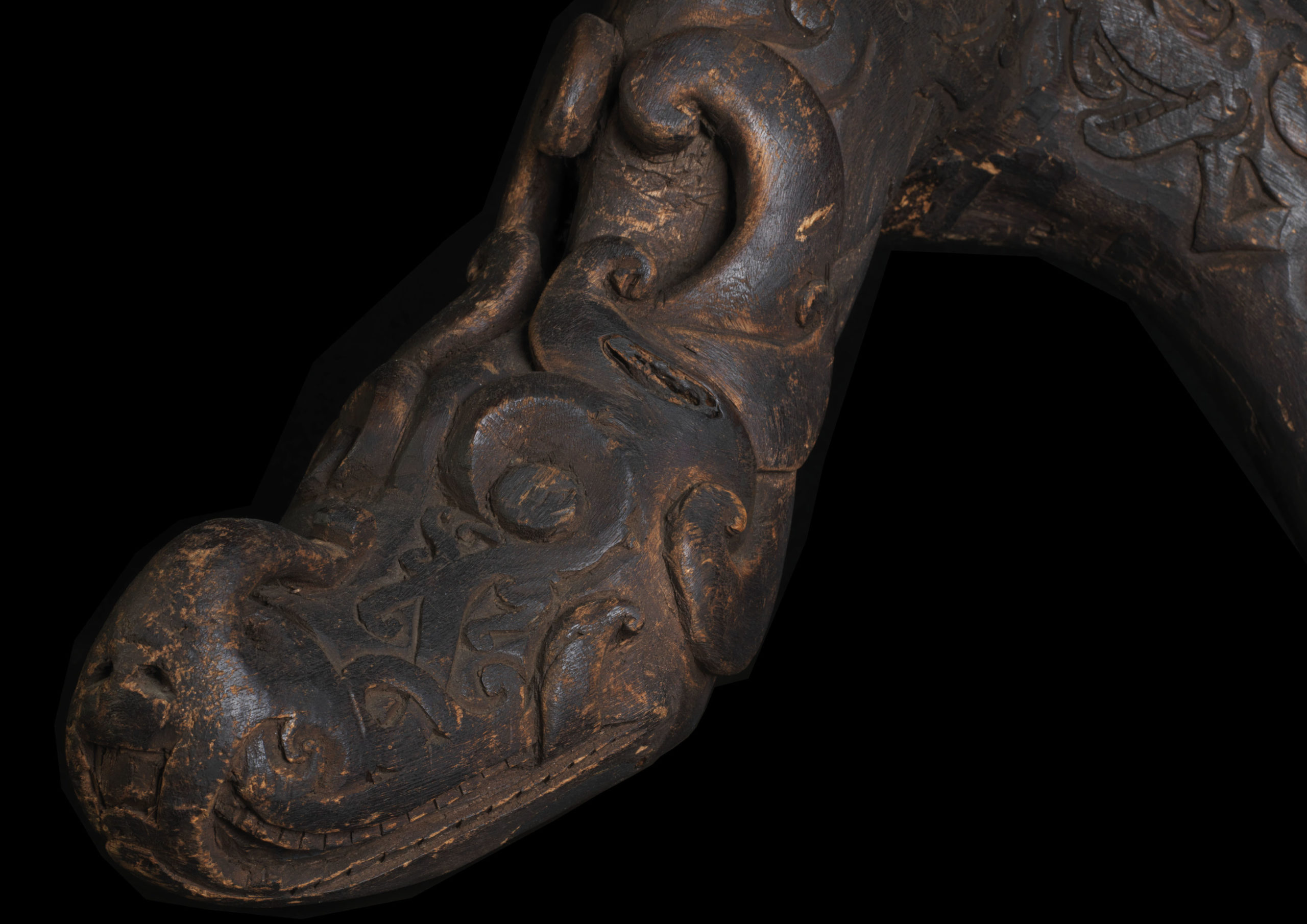Ceremonial stool
| Objekt | Ceremonial stool, ritual stool, chief´s stool |
| Kultur | Borneo, Kalimantan, Ost-Kajan, Dayak |
| Zeit | 19th century, beginning of the 20th century |
| Maße | Height 29,50 cm, width 50 cm |
| Material | Soft wood, pigments |
The three-legged ritual seat was used by healers or shamans and is made in the form of a dragon (aso motif) from a piece of wood. A brown pigment layer covers the wood.
It could also have been used by a high-ranking warrior when serving rice wine. Dragon motifs were intended for the nobility. Outside the festive season, such chairs were placed in front of the living flats of the nobility on the veranda in the nave, documenting the rank of the residents, who in everyday life behaved hardly any differently from the “commoners” and had largely the same daily routines.
At gawai (festivals), special seats were intended as badges of rank and status of high-ranking warriors. The Dayak usually sat at ground level on rattan mats. Chairs or stools may have only emerged in Indonesia in the course of the last centuries under Muslim influence, because they are not found on Hindu-Javanese temple friezes.
All of these festivals include invocations and chants (pengap or timang) where the ancestors are invited to gather. They are presented by bards (lemambang) or healers or shamans (manang). Often a chair is provided on which the high ancestors are called upon to take a seat and attend the festivities. It is likely that the present seat was intended for the ritual placement of a high-ranking ancestor on the occasion of one of the great bird or war festivals. Seats for humans were usually more anatomically designed and had short backrests. The seating arrangements and the distribution of food and rice wine were strictly regulated. The board of the nave or war leader (raja berani) honoured its best followers by providing first class catering at its side during the festivals. It is likely that the chair decorated with aso (dragon motifs reserved for the nobility) was intended as a symbolic seat of the ancestors at festivals; it may also have been used by a high-ranking warrior when serving rice wine. Outside the festive season, such chairs were placed in front of the flats of the nobility on the veranda in the nave, documenting the rank of the noble flat owners, who behaved little differently from the “common” ones in everyday life and had largely the same daily routines.
Weiterführende Literatur Zurück zur Raumansicht







